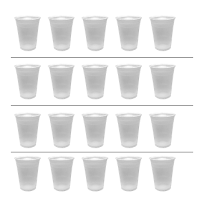The goal of my experiment will be to determine what level of borax solution is best to use when making a bouncing polymer ball to get the bouncy ball to bounce as high as it can go.
I am predicting that the more borax solution that is added, the higher the bouncy ball will bounce.
The materials needed for this experiment are:
-borax
-cornstarch
-white glue
-warm water
-food coloring
-measuring spoons
-spoon or craft stick
-2 small plastic cups
-marking pen
-watch with second hand
-zip-lock plastic bag
The procedures for making a bouncy polymer ball are :
1.) Label one cup plastic cup 'Borax Solution' and the other plastic cup 'Ball Mixture'
2.) Pour 2 tablespoons of warm water and 1/2 teaspoon of borax powder into the cup labeled 'Borax solution'. Stir the mixture to dissolve the borax. Add food coloring.
3.) Pour 1 tablespoon of glue into the cup label 'Ball Mixture'. Add 1/2 teaspoon of the borax solution you just made and 1 tablespoon of cornstarch. Do NOT stir. Allow the ingredients to interact on their own for 10-15 seconds and then stir them together to fully mix. Once the mixture becomes impossible to stir, take it out of the cup and start molding the ball with your hands.
4.) The ball will start out sticky and messy, but will solidify as you knead it.
5.) Once the ball is less sticky, go ahead and bounce it.
6.) You can store your plastic ball in a sealed ziploc bag when you are finished playing with it.
These procedures and materials were found on http://chemistry.about.com/od/demonstrationsexperiments/ss/bounceball.htm
In the experiment I will make 20 bouncy polymer balls. I will make a large borax solution that has 32 tablespoons of warm water and 8 teaspoons of borax powder and then i will use that borax solution for all of the bouncy balls. This will ensure consistency throughout the bouncy balls. The factor of the experiment will be the borax solution. The levels will be the different amount that i will add to the bouncy balls. There will be 5 balls that get what the procedure call for, which is 1/2 teaspoon. Those 5 will be the control group. There will be another 5 balls that get 1/4 teaspoon of borax solution, and there will be another 5 balls that get 3/4 teaspoon of borax solution and then one final group of 5 balls that gets 1 teaspoon of the borax solution. The treatment is the different amount of borax being added to the solution to see how it effects the bounciness of the bouncy ball. Once the ball is made, then I will hold each of them up from the same height and record how high they bounce by making a mark on the wall of their peak. Then measuring the height with a measuring tape.
The four principles of experimental design:
1.) Control: Control will be used in the experiment because there will be one control group of 5 bouncy balls that get the amount of borax solution that the procedure called for.
2.) Randomization: Randomization will be used in the experiment because once i have the plastic cups with the ingredients in them i will randomly assign them a level of treatment. There will be 5 cups for each level of treatment.
3.) Replication: Replication is used in the experiment because there are multiple bouncy balls for each treatment instead of just having one bouncy ball for each treatment. This will make the results more accurate because it provides more data.
4.) Blocking: Blocking is used in the experiment because I will block the 20 cups of 'Ball Mixture' to their different treatments. Here is a diagram of the blocking:
These blocks of 'Ball Mixture' cups would be made and then they would be randomly assigned a treatment.
Timeline:
Saturday December 8, 2012: Perform the experiment by the procedures and steps above.
Monday December 10 - Thursday December 13 : report data and conclusions from the experiment

No comments:
Post a Comment